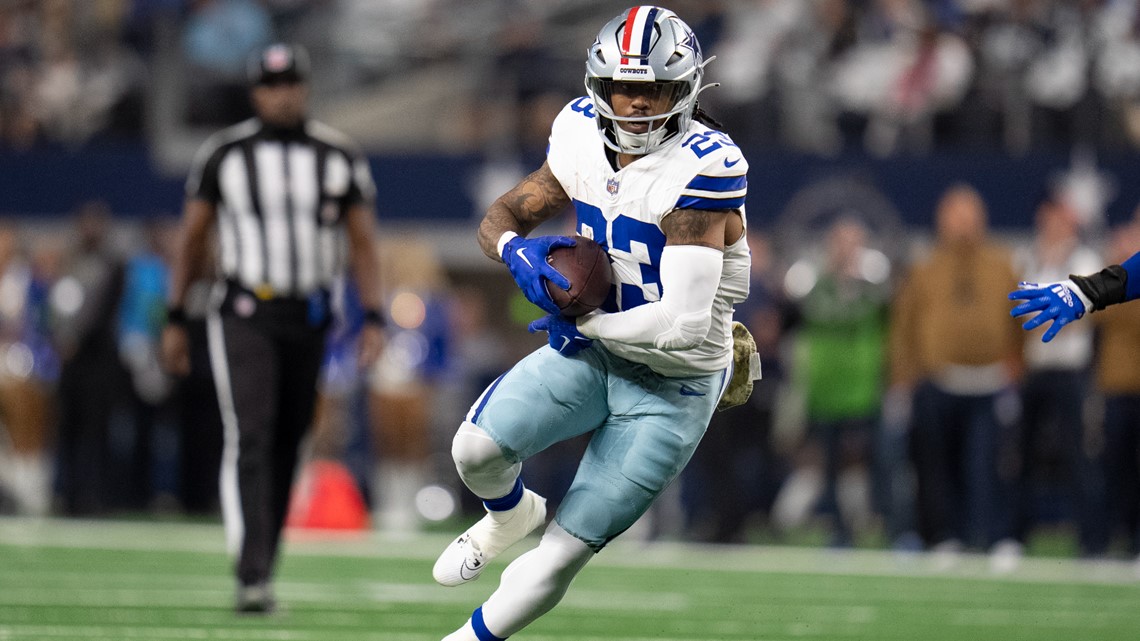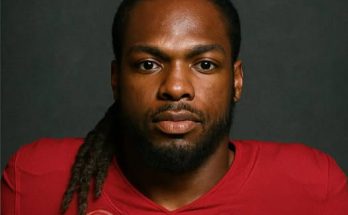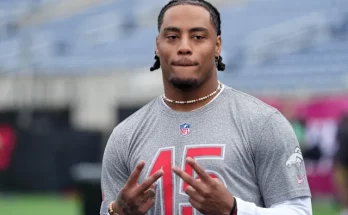The Dallas Cowboys once again face a crossroads in the offensive backfield heading into the 2025 NFL season. After another season of turbulence, experimentation, and personnel changes, the Cowboys must determine how to deploy their running backs. Will they rely on one bell-cow to shoulder the load, or embrace a committee approach like they’ve done in recent years?
With Tony Pollard now in Tennessee and Ezekiel Elliott returning in a different role, Mike McCarthy and the Dallas offensive staff must reimagine the ground game in a league that’s increasingly leaning on multiple backs to keep offenses dynamic and unpredictable. So, is a committee backfield the future once more in Dallas? All signs point to yes—and for good reason.
The Committee Trend in Dallas
In recent seasons, the Cowboys have flirted with and eventually adopted a backfield-by-committee approach. Even during the peak Ezekiel Elliott years, Tony Pollard’s emergence led to a more balanced workload. In 2022 and 2023, Pollard and Elliott combined for a one-two punch, alternating between power and speed. By 2024, with Elliott gone and Pollard leading the room, the team attempted to turn Pollard into a featured back—but the results were mixed.
Last year, Dallas ranked 15th in rushing yards per game and 23rd in yards per carry. Pollard, while productive in spurts, never fully transitioned into a dominant every-down back. The team cycled through change-of-pace options like Rico Dowdle and Deuce Vaughn, but injuries and inconsistencies limited their impact.
The end result was a fractured rushing identity and an offense that grew too reliant on Dak Prescott’s arm. McCarthy, who took over play-calling duties in 2023, emphasized balance but struggled to find a backfield rhythm. With Pollard now gone, the committee approach looks less like a fallback and more like a strategic necessity.
The Current Cowboys RB Room
The 2025 Cowboys running back group is a mix of veterans, young talent, and potential surprises:
- Ezekiel Elliott (returning): The former All-Pro has rejoined the team on a one-year deal. Though no longer the bell-cow he once was, Elliott still brings veteran leadership, short-yardage prowess, and pass-blocking ability.
- Rico Dowdle: The most consistent holdover from 2024, Dowdle is familiar with the system and flashed potential as a rotational back. He could take on a larger share of the carries this season.
- Deuce Vaughn: The 5’5” spark plug is dynamic in space but struggled to stay healthy in his rookie year. Vaughn’s receiving skills and agility make him a strong candidate for situational and third-down work.
- Royce Freeman (signed this offseason): The veteran bruiser is a steady downhill runner who adds depth and physicality to the backfield.
- Nathaniel Peat (UDFA): A rookie from Missouri with good speed and lateral quickness, Peat impressed during rookie minicamp and could earn a roster spot as a developmental piece.
This group doesn’t feature a clear-cut RB1. There is no Saquon Barkley or Derrick Henry figure in the room. What it does have, however, is depth, versatility, and complementary skill sets—ideal ingredients for a modern committee.
Historical Precedent and NFL Trends
The NFL has increasingly moved away from the single-back model. In 2024, just six running backs had over 250 carries. Only a few teams, like the Titans with Derrick Henry or the Raiders with Josh Jacobs (prior to their departures), leaned on one workhorse. Most successful teams—like the 49ers, Dolphins, and Ravens—shared the workload among two or more backs, keeping players fresh and schemes diverse.
Mike McCarthy’s background in Green Bay also suggests comfort with the committee model. During his Packers tenure, McCarthy used combinations like Eddie Lacy-James Starks and Ty Montgomery-Aaron Jones to keep defenses guessing. His time in Dallas has followed suit, and with no true alpha running back on the current roster, the writing is on the wall.
Cowboys EVP Stephen Jones also echoed this sentiment in recent comments, saying: “It’s less about one guy carrying the whole load these days. We want backs that complement each other and keep us versatile.”
How the Committee Could Look in 2025
If the Cowboys go with a three- or four-man rotation, here’s how it could break down:
- Ezekiel Elliott: The Veteran Hammer
Short yardage, goal line, and early down power runs. Elliott isn’t going to carry the ball 20 times a game, but he still excels in tough-yardage situations. Expect him to be a red zone staple and a locker room leader. - Rico Dowdle: The Primary Rotational Back
Dowdle may see the most carries per game, especially on early downs. He has the balance, vision, and strength to handle a moderate workload while still remaining fresh when rotating with others. - Deuce Vaughn: The Joker Card
Used in motion, screens, jet sweeps, and third-down sets, Vaughn is a weapon waiting to break loose. Expect the Cowboys to line him up all over the field to exploit mismatches and coverages. - Royce Freeman or Nathaniel Peat: Insurance Policy/Depth Option
Either Freeman or Peat could serve as an injury replacement or situational power back. Peat has special teams upside, which could make him valuable for a final 53-man roster spot.
This layered rotation offers the Cowboys flexibility and options without being overly reliant on any one player.
Benefits of the Committee Approach
- Health & Longevity: Running backs have short shelf lives. A shared workload reduces wear and tear, helping players stay healthy through the 17-game grind.
- Game-Specific Matchups: Different backs offer unique strengths. Facing a heavy defensive front? Lean on Elliott and Freeman. Need to exploit linebackers in coverage? Use Vaughn and Dowdle.
- Cost Efficiency: None of the current backs carry massive cap hits. The Cowboys can reallocate financial resources to address other needs like offensive line depth or defensive backs.
- Playbook Expansion: With versatile backs, Kellen Moore—or whoever handles offensive play-calling—can expand formations, pre-snap motion, and backfield alignment to keep defenses off-balance.
Potential Challenges
The committee approach isn’t without drawbacks. Without a true RB1, teams sometimes struggle to establish offensive rhythm, especially late in games. Rotating backs can also lead to communication lapses in blitz pickups and pass protection. Chemistry with the offensive line and quarterback cadence must be flawless, regardless of who’s in the backfield.
Another concern is fantasy of the hot hand—coaches sometimes rotate too aggressively or overthink substitutions, stalling momentum. Mike McCarthy will need discipline and clarity in how he distributes touches.
Impact on Dak Prescott
A consistent, even if shared, running game is crucial for Dak Prescott’s success. When the Cowboys run effectively, Prescott thrives off play-action, misdirection, and manageable third downs. A committee that can consistently gain 4–5 yards on early downs is vital to reducing pressure on the quarterback, especially given the O-line’s recent inconsistencies.
If the run game stagnates—or lacks identity—it puts even more burden on Prescott to carry the offense, a scenario that’s rarely worked well in the postseason.
What About the 2026 Draft or Trade Market?
The Cowboys may ultimately seek a more dynamic long-term answer at running back. The 2026 NFL Draft could feature a strong RB class, and Dallas could invest a Day 2 pick to find its next lead back. They could also monitor the trade market, especially midseason if injuries hit or the rotation proves ineffective.
Names like Dameon Pierce, Khalil Herbert, or even Rhamondre Stevenson (depending on contract situations) could become available.
Final Thoughts: Committee or Bust?
All indications suggest the Cowboys will embrace a committee approach again in 2025—and it’s the right decision given the personnel on the roster. With no clear-cut workhorse, a blend of experience, explosiveness, and utility roles gives the Cowboys the best shot to sustain a functional, multi-dimensional run game.
But success will depend on usage discipline, in-game adjustments, and trust in the system. If Mike McCarthy and his staff can balance the rotation without overcomplicating things, the committee approach could evolve from necessity into strength.



